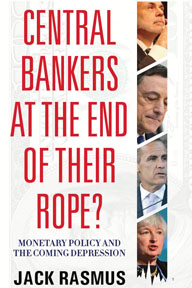COMMENTARY:
There has never been a recovery from the current recession, notwithstanding official declarations that the recent recession ended more than two years ago in June 2009. It all depends how one defines and measures recession, and GDP analysis and even the NBER’s broader analyses, are notoriously deficient in defining an end to recession. Since June 2009 the housing market has already experienced a double dip, as has the jobs market. The latter is now well on its way to a triple dip. The jobs, housing, and local government crises have together prevented any sustained recovery. And now Congress and the President, with their myopic fixation on deficit cutting, are all but guaranteeing a double dip. Add to that the progressive slippage of other economies like Japan, Australia, the UK, and Euro periphery deeper or into recession, and the rapid slowdown of growth in China, Brazil, India, plus the EUs slouching toward a banking implosion–and you get the overwhelming drift toward global double dip. Here s the hard, documented facts why the US and global economy are on the road to an inevitable official double dip.
For the full length 5,000 word feature article go to Jack’s
kyklosproductions website:
 Dr. Jack Rasmus @drjackrasmus
Dr. Jack Rasmus @drjackrasmus









A report by Northeastern University’s Center on Labor Market Studies (Andrew Sum et al) concluded that 92% of the growth in GDP since the bottom of the recession in July 2009 came from corporate profits. The report by Andrew Sum was called the “Wage-less and Job-less” Recovery, I don’t remember it’s exact title. Aggregate wages were still lower than the low-point of the recession two years ago, and jobs had recovered 1 million of the 8 million lost, and the work week average hours had recovered 2/3rds its drop off. I also read Thomas Palley’s argument “Budget Deficit Alarmism Sabotages Growth” arguing that the deficit can be raised. Obama and his advisors do not comprehend Keynes. Also I read the Zandi and Blinder report How the Recession Came to an End, or something like that, that states the unemployment rate would have jumped to 16% without the stimulus. Also $3.5 trillion spent on the bailout, ultimate cost predicted at $1.5 trillion, but maybe that total cost is still in doubt. “The ship is sinking and no one can tell the captain.”
I’m reminded of the Great Depression, we may be headed for our own, given the logic the politicians are following. The Great Depression lasted a decade. From 1933 to 1937 the unemployment rate dropped from 25% to 9.6%, due to public job creation, then went up in 1938 — according to a Marshall Auerback article, 8.30.10 at New Deal 2.0.org. And then I read a part of the book American Economic Development Since 1945 by Samuel Rosenberg, published 2002. He explains that in six years, 1939-1944, the GDP increased by 76%, a 10% annual compounded rate over six years. “Federal government purchases of goods and services, mainly military related, grew from $22.8 billion in 1939 to $269.7 billion in 1944. This increase is virtually identical to the overall increase in real GNP.” The workforce increased by 42%, “approximately 19.2 million additional people were either working or in the Armed Forces.” The workforce jumped from 45.8 million to 65 million. Yet the unemployment rate decreased to 1.4% in 1944. And the savings rate jumped from 5.5% to 25%, as during the war consumer goods were not to be found. —– I mention this to contrast all that your essay of 5000 words described. A war is not needed, creative leadership is needed. A stimulus directed at public jobs creation alone would cost between $200 billion a year to $350 billion, much smaller than the 1940s example, and affordable. What a shame. The solutions offered by today’s Keynesians are similar, The People’s Budget, the Rep. Jan Schakowsky budget, the Rasmus budget.